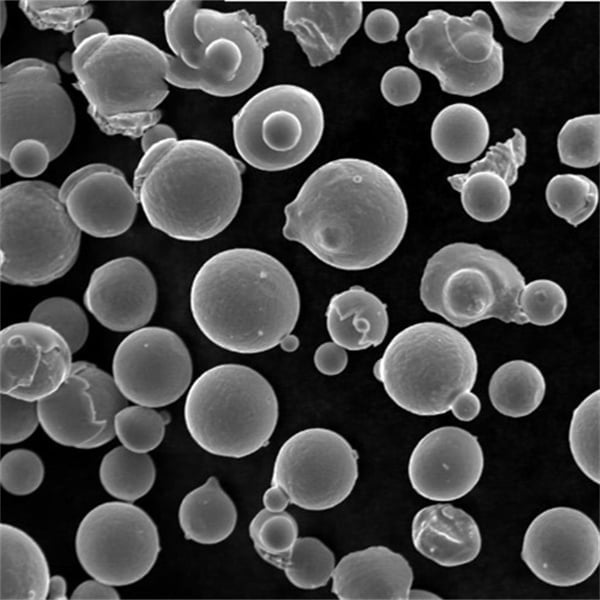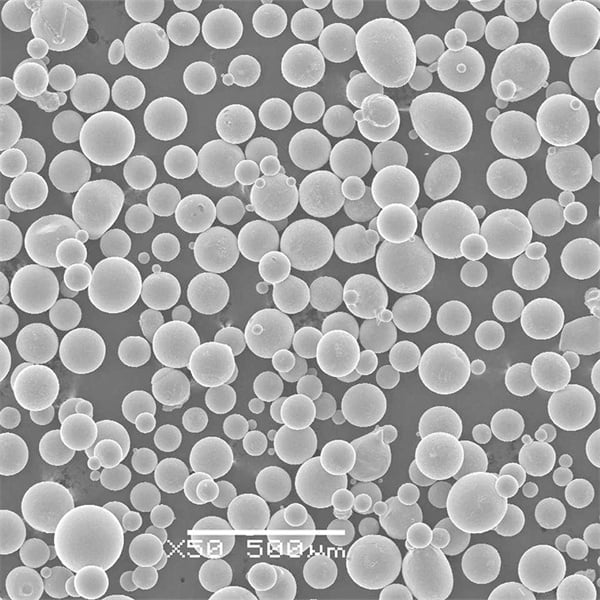Сплавление порошкового слоя с помощью лазера
Оглавление
Сплавление порошкового слоя с помощью лазера (PBF) производит революцию в обрабатывающей промышленности, предлагая беспрецедентную точность, эффективность и гибкость. Но что это такое и почему это должно вас волновать? Давайте углубимся в эту инновационную технологию, исследуя ее тонкости, области применения и то, почему она становится переломным моментом в мире производства.
Обзор технологии лазерного наплавления порошка
Laser-Based Powder Bed Fusion — это процесс аддитивного производства, в котором используется мощный лазер для сплавления частиц металлического порошка слой за слоем для создания твердого трехмерного объекта. Это метод, который относится к 3D-печати, но специально разработан для производства высококачественных металлических компонентов.
Основные характеристики лазерной порошковой сварки:
- Точность: Позволяет создавать сложные детали и геометрические формы с высокой точностью.
- Эффективность материала: Минимизирует отходы, используя только необходимое количество порошка.
- Персонализация: Позволяет создавать индивидуальные детали, соответствующие конкретным потребностям.

Виды металлических порошков для Сплавление порошкового слоя с помощью лазера
Выбор правильного металлического порошка имеет решающее значение для успеха процесса PBF. Ниже приведен краткий обзор некоторых популярных металлических порошков, используемых в PBF, вместе с их описаниями:
| Металлический порошок | Описание |
|---|---|
| Титан Ti-6Al-4V | Известный своим высоким соотношением прочности и веса, превосходной коррозионной стойкостью и биосовместимостью, он идеально подходит для аэрокосмической промышленности, производства медицинских имплантатов и автомобилестроения. |
| Алюминий AlSi10Mg | Сочетает в себе легкие свойства с хорошей механической прочностью и теплопроводностью, идеально подходит для автомобильных и аэрокосмических компонентов. |
| Нержавеющая сталь 316L | Обладает превосходной коррозионной стойкостью, прочностью и пластичностью, широко применяется в медицине, судостроении и химической обработке. |
| Инконель 718 | Никель-хромовый суперсплав с высокой термостойкостью и хорошей прочностью на разрыв, используемый в аэрокосмической технике, газовых турбинах и ядерных реакторах. |
| Кобальт-хром | Высокая износостойкость, биосовместимость и прочность, широко используется для стоматологических и ортопедических имплантатов, а также в аэрокосмической промышленности. |
| Мартенситностареющая сталь (1.2709) | Известен своей превосходной прочностью и ударной вязкостью после термообработки, используется в инструментальной, аэрокосмической промышленности и в компонентах, подвергающихся высоким нагрузкам. |
| Медь (Cu) | Исключительная тепло- и электропроводность, подходит для электрических компонентов и теплообменников. |
| Никелевый сплав (625) | Обладает превосходной стойкостью к коррозии и окислению, высокой прочностью, используется в морской, химической и аэрокосмической промышленности. |
| Инструментальная сталь (H13) | Известный своей твердостью, прочностью и устойчивостью к истиранию, часто используется при изготовлении форм, литье под давлением и изготовлении инструментов. |
| Титан (Ti-5Al-2.5Sn) | Хорошие характеристики при высоких температурах и сопротивление ползучести, используются в аэрокосмической и высокопроизводительной автомобильной промышленности. |
Свойства и характеристики металлических порошков
| Металлический порошок | Состав | Свойства | Приложения |
|---|---|---|---|
| Титан Ti-6Al-4V | Ti, Al, V | Высокое соотношение прочности и веса, коррозионная стойкость, биосовместимость | Аэрокосмическая промышленность, медицинские имплантаты, автомобилестроение |
| Алюминий AlSi10Mg | Al, Si, Mg | Легкий, хорошая механическая прочность, теплопроводность | Автомобильная промышленность, аэрокосмическая промышленность |
| Нержавеющая сталь 316L | Fe, Cr, Ni, Mo | Коррозионная стойкость, прочность, пластичность | Медицина, морская промышленность, химическая переработка |
| Инконель 718 | Ni, Cr, Fe, Nb, Mo, Ti | Устойчивость к высоким температурам, прочность на разрыв | Аэрокосмическая промышленность, газовые турбины, ядерные реакторы |
| Кобальт-хром | Co, Cr, Mo | Износостойкость, биосовместимость, прочность | Дентальные, ортопедические имплантаты, аэрокосмическая промышленность |
| Мартенситностареющая сталь (1.2709) | Fe, Ni, Co, Mo | Прочность, вязкость после термообработки | Инструментальная промышленность, аэрокосмическая промышленность, высоконагруженные компоненты |
| Медь (Cu) | Cu | Тепло- и электропроводность | Электрические компоненты, теплообменники |
| Никелевый сплав (625) | Ni, Cr, Mo, Nb | Стойкость к коррозии и окислению, высокая прочность | Морская, химическая, аэрокосмическая |
| Инструментальная сталь (H13) | Железо, Хром, Мо, Кремний, Ванадий | Твердость, прочность, стойкость к истиранию | Изготовление форм, литье под давлением, оснастка |
| Титан (Ti-5Al-2.5Sn) | Титан, Алюминий, Сернистый газ | Высокотемпературные характеристики, сопротивление ползучести | Аэрокосмическая промышленность, высокопроизводительная автомобилестроение |
Применение лазерной порошковой сварки
Laser-Based PBF производит фурор в различных отраслях промышленности благодаря своей универсальности и точности. Вот взгляд на то, где он применяется и почему он так эффективен:
| Промышленность | Приложения |
|---|---|
| Аэрокосмическая промышленность | Детали двигателя, конструктивные детали, легкие кронштейны |
| Медицина | Индивидуальные имплантаты, протезы, хирургические инструменты |
| Автомобильная промышленность | Легкие компоненты, индивидуальные детали, улучшения производительности |
| Инструментальная оснастка | Формы для литья под давлением, формы для литья под давлением, индивидуальная оснастка |
| Ювелирные изделия | Индивидуальный дизайн, сложные узоры, быстрое прототипирование |
| Энергия | Турбинные лопатки, теплообменники, топливные форсунки |
| Электроника | Радиаторы, электрические компоненты, индивидуальные корпуса |
| Стоматология | Коронки, мосты, зубные имплантаты |
| Морской | Детали, устойчивые к коррозии, легкие компоненты |
| Архитектура | Индивидуальные приспособления, дизайн-прототипы |
Преимущества Сплавление порошкового слоя с помощью лазера
Почему технология Laser-Based Powder Bed Fusion привлекает так много внимания? Вот несколько веских причин:
- Точность и детализация: Возможность изготовления сложных и замысловатых геометрических форм, которые сложны для традиционных методов производства.
- Эффективность материала: Минимизирует отходы за счет использования только необходимого количества металлического порошка.
- Персонализация: Легко создавайте индивидуальные детали, соответствующие конкретным требованиям.
- Скорость и эффективность: Более короткие сроки производства по сравнению с традиционными методами.
- Прочность и долговечность: Производит детали с превосходными механическими свойствами.
Недостатки лазерного наплавления порошка
Несмотря на многочисленные преимущества, лазерная PBF имеет и некоторые ограничения:
- Стоимость: Высокие первоначальные инвестиции в оборудование и материалы.
- Сложность: Для эффективной работы требуются специальные знания и навыки.
- Ограничения по размеру: Обычно ограничивается небольшими деталями из-за размера рабочей камеры.
- Отделка поверхности: Может потребоваться последующая обработка для достижения желаемого качества поверхности.
Технические характеристики, размеры, марки и стандарты
| Металлический порошок | Технические характеристики | Размеры | Классы | Стандарты |
|---|---|---|---|---|
| Титан Ti-6Al-4V | ASTM B348, ASTM F1472 | 15-45 мкм, 45-106 мкм | 5 класс | ИСО 5832-3, АМС 4928 |
| Алюминий AlSi10Mg | EN AC-43400 | 20-63 мкм, 45-90 мкм | ||
| Нержавеющая сталь 316L | ASTM A276, ASTM F138 | 15-45 мкм, 45-106 мкм | ISO 5832-1 | |
| Инконель 718 | AMS 5662, ASTM B637 | 15-45 мкм, 45-106 мкм | ||
| Кобальт-хром | ASTM F75, ASTM F1537 | 15-45 мкм, 45-106 мкм | ||
| Мартенситностареющая сталь (1.2709) | DIN 1.2709, АМС 6514 | 15-45 мкм, 45-106 мкм | ||
| Медь (Cu) | ASTM B170 | 20-63 мкм, 45-90 мкм | ||
| Никелевый сплав (625) | AMS 5666, ASTM B443 | 15-45 мкм, 45-106 мкм | ||
| Инструментальная сталь (H13) | ASTM A681 | 15-45 мкм, 45-106 мкм | ||
| Титан (Ti-5Al-2.5Sn) | ASTM B348 | 15-45 мкм, 45-106 мкм |
Поставщики и ценовая политика
| Поставщик | Металлические порошки в наличии | Цена (за кг) | Расположение |
|---|---|---|---|
| Технология столярных работ | Титан, алюминий, нержавеющая сталь, инконель, кобальт-хром | $200 – $600 | США |
| Sandvik | Титан, алюминий, нержавеющая сталь, инконель, кобальт-хром | $250 – $700 | Швеция |
| GKN Additive | Титан, алюминий, нержавеющая сталь, инконель, кобальт-хром | $220 – $650 | Германия |
| Технология LPW | Титан, алюминий, нержавеющая сталь, инконель, кобальт-хром | $230 – $680 | ВЕЛИКОБРИТАНИЯ |
| Höganäs | Титан, алюминий, нержавеющая сталь, инконель, кобальт-хром | $240 – $690 | Швеция |
| AP&C | Титан, алюминий, нержавеющая сталь, инконель, кобальт-хром | $210 – $620 | Канада |
| Aubert & Duval | Титан, алюминий, нержавеющая сталь, инконель, кобальт-хром | $220 – $640 | Франция |
| Praxair Surface Technologies | Титан, алюминий, нержавеющая сталь, инконель, кобальт-хром | $230 – $660 | США |
| Передовые порошки и покрытия (AP&C) | Титан, алюминий, нержавеющая сталь, инконель, кобальт-хром | $220 – $650 | Канада |
| Renishaw | Титан, алюминий, нержавеющая сталь, инконель, кобальт-хром | $230 – $670 | ВЕЛИКОБРИТАНИЯ |

Сравнение плюсов и минусов Сплавление порошкового слоя с помощью лазера
| Аспект | Преимущества | Ограничения |
|---|---|---|
| Точность и детализация | Высокая точность и возможность создания сложных геометрических форм | Может потребоваться последующая обработка для придания поверхности гладкости. |
| Эффективность использования материалов | Минимальные отходы, используется только необходимое количество порошка | Высокая стоимость металлических порошков |
| Персонализация | Легко создавайте индивидуальные детали, соответствующие конкретным потребностям | Сложность конструкции и эксплуатации |
| Скорость и эффективность | Более короткие сроки производства по сравнению с традиционными методами | Время первоначальной настройки и калибровки |
| Прочность и долговечность | Производит детали с превосходными механическими свойствами | Ограничения по размеру из-за ограничений камеры сборки |
| Стоимость | Долгосрочная экономия затрат на материалы и эффективность производства | Высокие первоначальные инвестиции в оборудование и материалы |
ЧАСТО ЗАДАВАЕМЫЕ ВОПРОСЫ
Что такое лазерная порошковая сплавка?
Лазерная технология спекания порошка (PBF) — это процесс аддитивного производства, в котором используется мощный лазер для спекания частиц металлического порошка слой за слоем с целью создания цельного трехмерного объекта.
Какие типы металлических порошков можно использовать в ПБФ?
Могут использоваться различные металлические порошки, такие как титан Ti-6Al-4V, алюминий AlSi10Mg, нержавеющая сталь 316L, инконель 718, кобальт-хром, мартенситностареющая сталь, медь, никелевый сплав 625, инструментальная сталь H13 и титан Ti-5Al-2.5Sn.
Каковы преимущества лазерного наплавления порошка?
К преимуществам относятся высокая точность и детализация, эффективность материалов, возможность индивидуального изготовления, скорость и эффективность, а также производство деталей с превосходными механическими свойствами.
Каковы ограничения лазерной технологии порошковой сварки?
К ограничениям относятся высокие первоначальные затраты, сложность эксплуатации, ограничения по размеру и необходимость последующей обработки для достижения желаемого качества поверхности.
Какие отрасли промышленности получают выгоду от лазерной сварки порошковых покрытий?
Такие отрасли, как аэрокосмическая, медицинская, автомобильная, инструментальная, ювелирная, энергетическая, электронная, стоматологическая, судостроительная и архитектурная, извлекают выгоду из PBF благодаря его универсальности и точности.
Чем PBF отличается от традиционных методов производства?
PBF обеспечивает более быстрое время производства, более высокую точность и возможность создания сложных геометрий, которые сложны для традиционных методов. Однако это требует более высоких первоначальных затрат и эксплуатационной сложности.
Заключение
Технология Laser-Based Powder Bed Fusion прокладывает путь будущему производства. Ее способность производить высокоточные, индивидуальные детали с минимальными отходами преобразует отрасли от аэрокосмической до медицинской. Хотя она сопряжена со своими сложностями, преимущества намного перевешивают ограничения, что делает ее ценным дополнением к современному производственному инструментарию. Независимо от того, являетесь ли вы инженером, дизайнером или производителем, понимание и использование возможностей PBF может открыть новые двери для инноваций и эффективности в вашей работе.
Поделиться
MET3DP Technology Co., LTD - ведущий поставщик решений для аддитивного производства со штаб-квартирой в Циндао, Китай. Наша компания специализируется на производстве оборудования для 3D-печати и высокопроизводительных металлических порошков для промышленного применения.
Сделайте запрос, чтобы получить лучшую цену и индивидуальное решение для вашего бизнеса!
Похожие статьи

Высокопроизводительные сегменты сопловых лопаток: Революция в эффективности турбин с помощью 3D-печати металла
Читать далее "
3D-печатные крепления для автомобильных радарных датчиков: Точность и производительность
Читать далее "О компании Met3DP
Последние обновления
Наш продукт
CONTACT US
Есть вопросы? Отправьте нам сообщение прямо сейчас! После получения Вашего сообщения мы всей командой выполним Ваш запрос.
Получите информацию о Metal3DP
Брошюра о продукции
Получить последние продукты и прайс-лист

Металлические порошки для 3D-печати и аддитивного производства
КОМПАНИЯ
ПРОДУКТ
ИНФОРМАЦИЯ О КОНТАКТЕ
- Город Циндао, Шаньдун, Китай
- [email protected]
- [email protected]
- +86 19116340731















